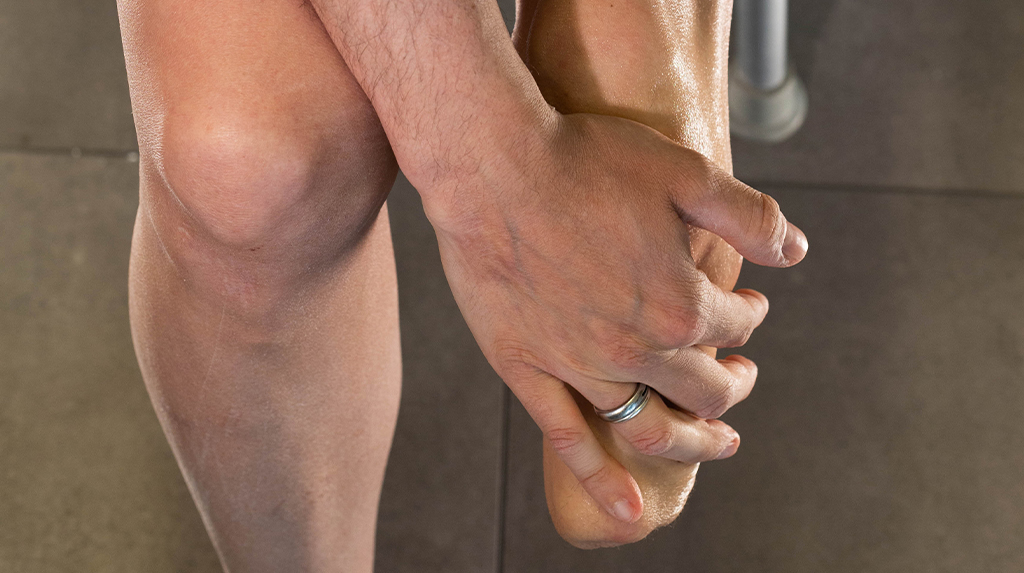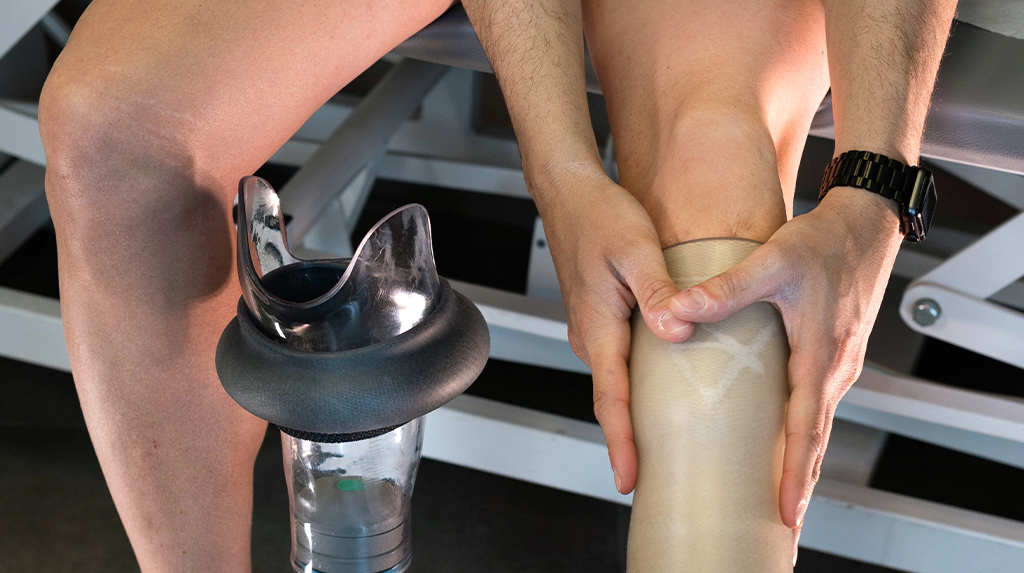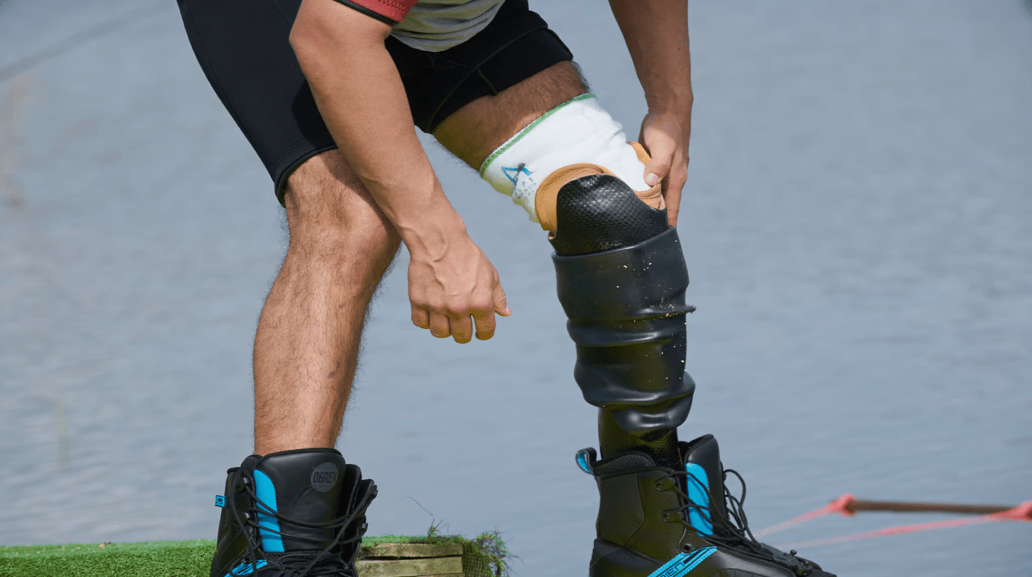
Caring for the Residual Limb
April 7, 2021
ALPS Gel: A Second Skin
June 24, 2021Residual Limb Volume Change Management Systems
Being able to manage volume variations in the residual limb adequately is essential for being able to comfortably and safely wear a prosthesis.
Size variations of the limb can negatively impact the fit of the prosthesis and cause skin irritations, making it difficult to keep wearing the prosthesis.
The natural variations in the volume of the limb throughout the day are due to variations in fluid retention. Many factors can influence these variations, including the degree of physical exertion or the swelling that typically accompanies the postoperative period.
Using different thicknesses of prosthetic socks is a simple way to manage the volume changes throughout the day, ensuring that your fit is constantly comfortable.
Having a set of socks in various thicknesses is highly recommended to handle any changes in residual limb volume. Having a complete set allows you to change and wash them daily, giving them time to regain their original shape as the fibers regain their elasticity.
Changing socks often and using the proper combination of thicknesses helps guarantee the wearability of the socket, which is fundamental to the health of the residual limb and for the overall well-being of the wearer. In addition, the correct use of prosthetic socks extends the life of your prosthetic liner by reducing the amount of friction it is exposed to.
If you cannot manage the variations in residual limb volume just with prosthetic socks, it is advisable to consult your prosthetist. You might be experiencing a “long-term” variation in volume. This is a frequent phenomenon among new amputees in the postoperative phase when the limb is still stabilizing, but it can also occur much later on as a consequence of weight gain or loss, for example, or a change in the muscular structure of the limb itself.
How and when to wear prosthetic socks
Excessive movement of the residuum within the socket and/or the fact that the limb can be inserted into the socket without resistance could indicate the need to compensate for variations in volume.
The prosthetic sock should be worn over the prosthetic liner.
More than one sock may be worn at a time to achieve the desired thickness.
Sock thickness is measured in plies (1, 3 and 5 ply). Therefore, should you need, for example, a 4-ply thickness, you obtain it by wearing a 3 ply over a 1 ply.
By the same token, it is important to pay attention to signs that you need to reduce the thickness of your socks, in particular when there is a complete lack of contact with the distal end of the socket. In this case, sock layers should be removed until a correct fit is obtained.
ALPS prosthetic socks
ALPS offers a wide range of prosthetic socks in 3 different thicknesses (1, 3, and 5 plies), in 3 sizes (Narrow, Medium, Large), in 4 lengths (Extra Short, Short, Regular, and Long), and in 3 styles (with a distal hole, without a distal hole, and with a reinforced distal hole).
They are available both in single packets or in the practical ALPS Socks Bundle set that includes several socks in the size and length you desire but in different thicknesses to allow you to handle variations in limb volume with ease and to be able to change them every day.
Choosing the best sock to suit your needs is easy with ALPS socks’ color-coded thickness indicator: blue for 1-ply; 3-ply, yellow; 5-ply, green.
ALPS prosthetic socks are light, soft, and extremely comfortable, with a perfect fit. They are made with technologically advanced fibers, highly effective in moisture management, that wick away perspiration so it can easily evaporate. This advanced fabric means that socks maintain their original quality for a long time without getting misshapen or matting up.
ALPS high-quality technical fabric
There are many prosthetic socks on the market, and the material they are made from can make a difference.
If we put a weight on two different kinds of socks, one made of terrycloth and the other of a specially made technical fabric, we’ll see that the technical fabric is more resistant to compression and, once the pressure is off, its fibers progressively return to their original thickness.
Using a technical fabric guarantees that the product will maintain a constant thickness over time, respecting the pressure distribution as prescribed by the technician and ensuring an optimal fit of the limb in its socket.
This provides the patient with a constant and comfortable fit that doesn’t change over time: the thickness of the sock corresponding to a given color will always give the same result.
ALPS has chosen to produce its prosthetic socks using a high-quality technical fabric, with the aim to guarantee the latest technology and to provide the simplest, but most effective and reliable response for preventing problems caused by variations in limb volume.
ALPS Skin Reliever
ALPS Skin Reliever is a prosthetic sock made of styrene gel to compensate for the loss of volume in the residual limb. Made with ALPS EasyGel, it has a uniform thickness of 1.5mm at the proximate end, progressively increasing to 3mm at the distal point, to provide maximum comfort.
It is made to be worn directly against the skin of the residual limb, under the prosthetic liner.
It can also be worn by those who do not use a prosthetic liner and combined with ALPS prosthetic knitted socks.

